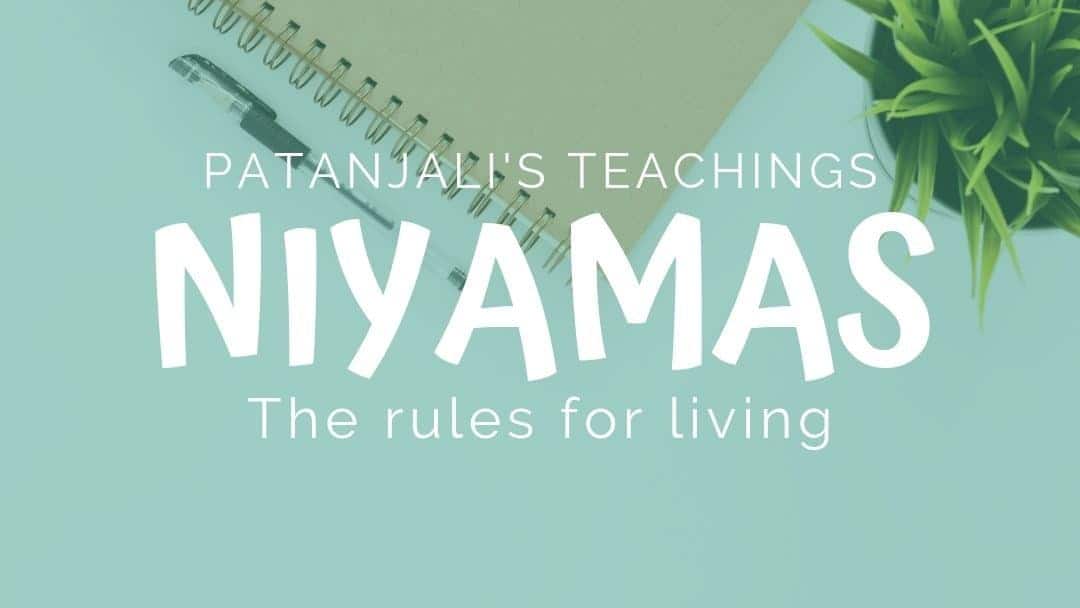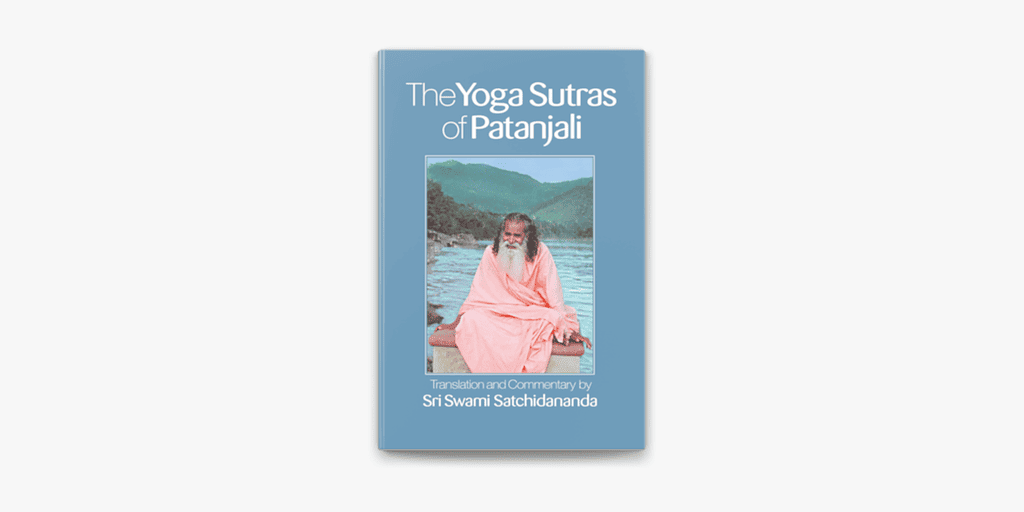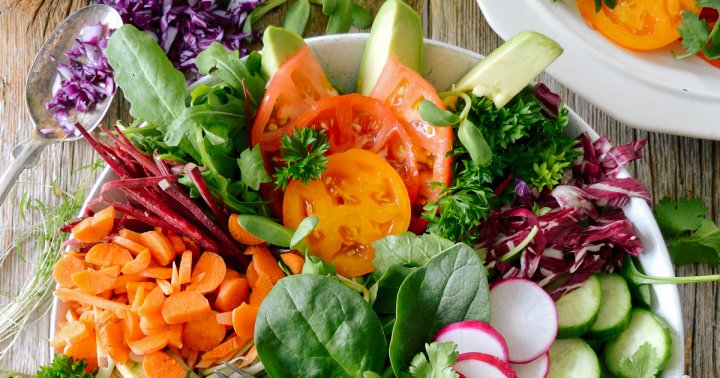Living Yoga off Your Mat With the Five Niyamas
The post Living Yoga off Your Mat With the Five Niyamas appeared first on The Yoga Nomads.

You know that feeling of lightness, peace, and contentment you feel after a yoga class? Pressing up out of savasana, into a seated posture, you have a renewed sense of joy. You bow forward in namaste, thank your teacher, and roll up your mat- all with a glimmer of inspiration in your eyes.
Have you ever wished you could take that feeling with you all the time, not just on your yoga mat?
If you want to start living your yoga practice in your daily life, the five niyamas offer thorough and practical guidance on how to do so.
‘What are the niyamas,’ you ask?
Patanjali’s Yoga Sutras

Sri Patanjali is known as the “father of yoga.” He compiled the yoga sutras sometime between 5,000 BC to 300 AD. He was the first to systematize, compile, and record the ideas and practices of yoga. His Sutras are the foundation for all types of yoga and meditation.
The Yoga Sutras of Patanjali is a clear, simple, and practical handbook for Raja Yoga and yoga philosophy. It is like the Bible of Yoga. Patanjali presents the entire science of yoga and explains how to reach samadhi, the ultimate state of liberation and enlightenment.
Traditionally, there are eight limbs of Raja Yoga. They include:
 Yamas- social ethics, how to live your life in harmony with others
Niyamas- personal virtues, how to live your internal life, self-discipline
Asana- physical practice, steady and comfortable posture for meditation
Pranayama- regulation of the breath, literally “life force energy”
Pratyahara- withdrawal of the senses
Dharana- concentration of the mind
Dhyana- meditation
Samadhi- transcendent superconsciousness, liberation, realization
Yamas- social ethics, how to live your life in harmony with others
Niyamas- personal virtues, how to live your internal life, self-discipline
Asana- physical practice, steady and comfortable posture for meditation
Pranayama- regulation of the breath, literally “life force energy”
Pratyahara- withdrawal of the senses
Dharana- concentration of the mind
Dhyana- meditation
Samadhi- transcendent superconsciousness, liberation, realization
The remainder of this article will focus on the five niyamas:
Saucha- cleanliness Santosha- contentment Tapas- self-discipline Svadhyaya- self-study Ishvara Pranidhana- dedication to the divineThe Five Niyamas

Patanjali’s niyamas are the part of yoga philosophy that refer to a yogi’s commitment to individual discipline. They describe the way you, as a yogi, should live your internal and individual life. If you want to take your yoga practice beyond the mat and live a yogic lifestyle, the niyamas offer guidance and clarity on how to do so.
Saucha

The first of the niyamas, saucha, refers to purity and cleanliness. The spiritual, physical, emotional, and mental state of a yogi is striving to be clean always. You are what you attract and you attract what you are. If you have many negative thoughts, then most likely your feelings and behavior will also be negative. If you watch trashy TV, you will find that drama seeping into your own life.
Purity of life begins with your thoughts and actions.
Some tangible ways you can live the first niyama in your day to day life include:
words
Be impeccable with your word. This is also one of the agreements laid out by Don Miguel Ruiz in his practical and simple guide to living more intentionally, The Four Agreements. You word is your strongest tool, and to use it lazily or negatively is to invite negativity into your life. Use your word in a way that is truthful and helpful. Use your voice to advocate for yourself and others.
decluttering living space
If your home is messy and cluttered, your life will feel that way too. Your immediate environment affects your mood significantly! It is a wonder what making your bed every morning can do for your mindset. Be sure to clean up your dinner dishes before going to bed, and clean off your workspace before going to sleep as well. Starting your day off with a clean and tidy house will allow you to prioritize what is important. Consider decluttering your closets and living spaces. Remember, what you own, owns you.
using products with natural ingredients
This is a straightforward recommendation! There are many toxins and chemicals in hygienic products today. Opt for products that only use natural ingredients. Your skin is your largest organ. You wouldn’t cover any of your other organs with harmful chemicals! I highly recommend the California-based brand, Natura Culina.
clean eating
Another straightforward recommendation, fill your body with only clean and whole foods. If you can avoid animal products it is best to do that. At the very least, avoid mass-produced meat. These animals endure a lot of stress and suffering, not only is this immoral, but you also consume this stress and suffering when you consume the meat that comes from them. Not to mention the antibiotics they are pumped full of! Your body is the home of your soul and the divineness within you, during your time here on earth. Treat it as such.
Relationships
The quality of your relationships reflects the quality of your life. Surround yourself with others who strive to live a clean and pure lifestyle. Avoid people who are attached to drama, they will seek to bring it into your life as well.
meditating
Meditation itself is one of the eight limbs on the path to yoga, dhyana. It is also the best way to maintain a clean and pure mind. Becoming aware of your thoughts is the first step to clearing the mind. Meditation allows you to pull your awareness inward and learn how to focus and calm the mind.
Santosha

The second niyama, santosha, is all about valuing contentment. Let it be. Let go of control. Practicing contentment means releasing attachment and desire. It means being content with what you have and with the present moment.
cultivate a positive mindset
You can use positive affirmations to maintain a positive mindset even through stress and setbacks. All emotions have value and are valid to feel. But santosha teaches us to foster a sense of contentment even in the face of anger or grief.
gratitude
Practicing gratitude is a powerful practice to introduce more santosha in your life. Many yogis enjoy keeping a gratitude journal in which they write three things they are grateful for every day. Practicing gratitude can also look like going out of your way to thank the people in your life who support you. Showing kindness to strangers, and protecting the earth are also ways to express gratitude in the name of the divine oneness we all share.
here and now
If you are constantly reliving the past, or thinking ahead to the future, then you are not practicing contentment. Being content means being present in the here and now. You cannot be content if you are not present, if you are letting a time that does not exist (the past or future) dictate your life.
keeping your center
Staying aligned to yourself, your priorities, and your values makes it easier to continue practicing contentment. If you lose your center, it is easy to get swept up in desires and attachment, the past or the future. Keep your center by engaging in other yogic practices like meditation, journaling, asana, and pranayama.
slow down
A fast-paced lifestyle generally leads to unnecessary complexity and noise. Slowing down the pace of your day-to-day living invites more stillness, silence, and simplicity- which are all wonderful compliments to contentment.
Tapas

Literally translating to “heat,” the third of the niyamas refers to living a disciplined life. Yogis practice a high degree of self-discipline. They willfully expose themselves to suffering, in order to overcome it and achieve a sense of joy. To incorporate the third niyama in your life, try:
moving the body
This recommendation can literally turn up the heat! Moving the body in a way that maintains health is an important discipline for any yogi. The asana practice is meant to prepare you to engage in seated meditation for extended periods of time.
routine
Many yogis enjoy waking up very early to meditate and engage in other practices- before the noise of the crazy world takes over. It takes a lot of self-discipline to get yourself out of bed before the sun rises. But maintaining a daily morning routine is a tangible way to practice tapas.
manifesting with intentional action
You cannot wish your dream reality into existence. It takes discipline. Manifest all you want, but without intentional action attached to that manifestation, nothing will change. If you have goals, dreams, and priorities, take disciplined steps toward meeting those goals.
Svadhyaya

Yoga both invites and requires deep introspection. Looking inward, self-study, or self-reflection- this is the meaning of the fourth of the niyamas, svadhyaya. Engaging in svadhyaya in your daily life can take a number of different interrelated forms.
Understand you are only your awareness
First let’s understand what you are not. You are not your emotions, feelings, or thoughts. You are only your awareness. The more you place your awareness on your feelings and thoughts, the more power they have over you. There are entire books on this one point, and many of them. One of my favorites is The Untethered Soul. Once you understand you are only your awareness- you are completely free to unite with your most authentic and true self.
Chanting of mantras
Chanting mantras and affirmations can help you go deeper into your real self. They help you align with the divine within you, that you share with nature and all other sentient beings.
Studying sacred texts
Sacred texts- such as the Bhagavad Gita, the Bible, and the Qur’an, offer age-old insights into humanity and the human experience. These texts are important tools for self-reflection. They can offer you perspective on how you fit into this world, what you want to give and receive during your time here on earth.
Journaling
Journaling is a beautiful practice of self-study. Putting pen to paper often helps clarify swirling or fuzzy thoughts. Journaling helps you to get to know yourself more, your patterns, what makes you tick, what your priorities are, and so much more.
Observing and noticing
Slow down and take time to observe and notice your surroundings. Take note of how you fit into them and interact with them. Your environment has a significant impact on how you think, feel, and act. Sometimes, turning inward means tuning into your immediate external world.
Ishvara Pranidhana

Our final of the five niyamas is ishvara pranidhana. This niyama urges seekers to dedicate their life to humanity, and surrender to the divine and the higher self.
surrender to the flow
Trust that the universe has a plan for you, this is crucial to your spiritual development. By letting go of attachment to outcomes and control, you can work with the flow of the universe to arrive at a destination far greater than what you have dreamed of. Surrendering to the flow means working with all of the other niyamas and sutras to position yourself mentally, spiritually, and physically in a spot where you are ready to work with the universe and accepts its many blessings.
Bhakti yoga
One of the four paths of yoga, Bhakti yoga is all about a devoted spiritual practice. Music and chanting are significant in this practice. Dancing and flowing along to these divine sounds aligns your heart and soul with a place of bliss and surrender.
serve others altruistically
Finally, living a yogic lifestyle means being in union with others and with all of creation. We serve others altruistically because we are all part of one earth, one life, and one breath. There is no reason to not support and love one another. Devoting yourself to be of deep service to others is one of the highest and most divine paths you can take.
FAQs
What is the difference between the yamas and niyamas?
Yamas refer to our behavior and thinking towards others and the world. Niyamas refer to our behavior and thinking towards ourselves.
What are the five yamas?
Ahimsa- non-violence
Satya- truthfulness
Asteya- non-stealing
Brahmacharya- moderation of the senses
Aparigraha- non-attachment

 JimMin
JimMin 































